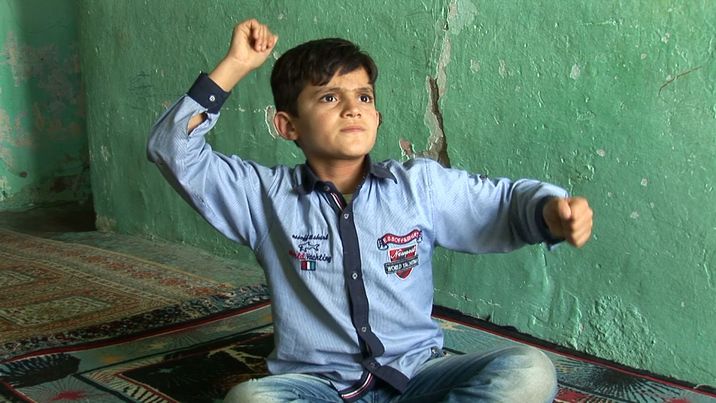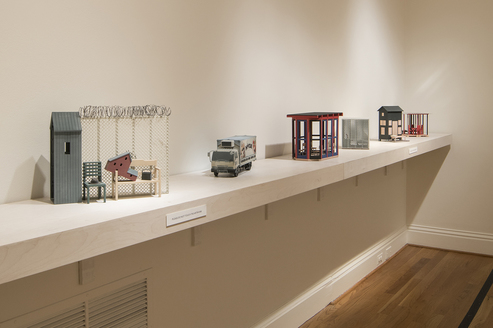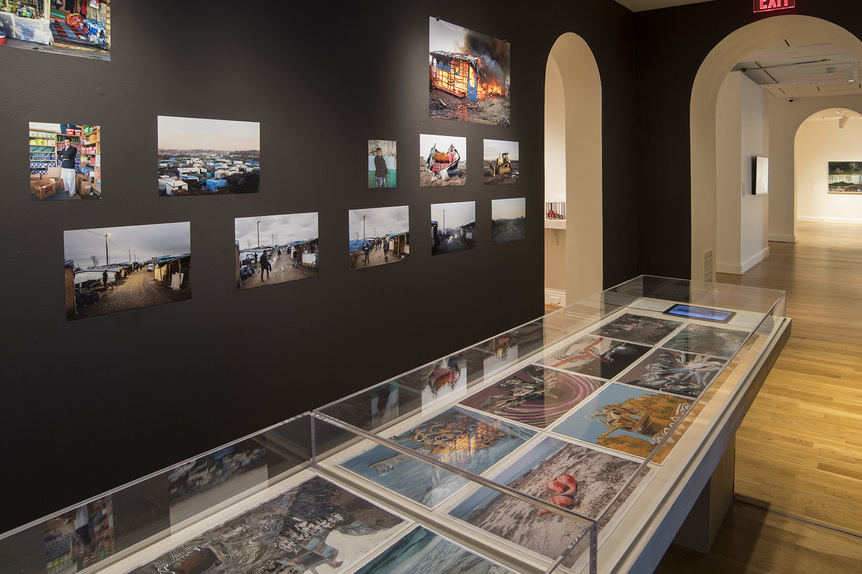-
From Current Issue
-
- Editor’s Letter Fire in the Heart
- Reviews I Gusti Ayu Kadek Murniasih
- Reviews 11th Seoul Mediacity Biennale: “One Escape at a Time”
- Dispatch Networked China
- One on One Monira Al Qadiri on Yukio Mishima
- Essays The rise of independent art spaces in pandemic-era Shanghai
- Features Tuan Andrew Nguyen
- Table of Contents
- Web Exclusives
- Archive
- Subscribe

R
E
V N
E
X
T
Installation view of “The Warmth of Other Suns: Stories of Global Displacement,” at The Phillips Collection, Washington, DC, 2019. Photo by Lee Stalsworth. Courtesy The Phillips Collection.
The idea of art as a historical agent of social change couldn’t be more forceful than in the extensive exhibition “The Warmth of Other Suns: Stories of Global Displacement,” at the Phillips Collection in Washington, DC. Spread over three floors in the redbrick town house, the exhibition, hosted in collaboration with The New Museum in New York, brought together the works of 75 international artists united by their commitment to highlighting victims of social injustice, war, and despotism. The show was bookended by John Akomfrah’s stirring three-channel video Vertigo Sea (2015), which explores the ocean as a site for the slave trade, migration of refugees, and marine exploitation, and Jacob Lawrence’s spare, bleak Migration Series (1940–41), painted on hardboard, of African-Americans escaping the Jim Crow-era South—two projects that evidenced the exhibition’s wide historical and sociopolitical scope.
The most disturbing works on display tread a fine line between documentation and activism. Erkan Özgen’s video Wonderland (2016) portrays a deaf-mute refugee child’s heart-wrenching sounds and frantic gestures describing an ISIS attack on his Syrian hometown. Seeming exploitative at first for making a child re-enact tragic events, the work confronts the moral indeterminateness surrounding who and how best one can narrate trauma. Similarly, Yasmine Kabir’s 35-minute film My Migrant Soul (2001) is filled with raw footage of a Bangladeshi migrant’s family describing the circumstances surrounding his death after being trafficked to Malaysia and forced into slavery. Khaled Jarrar’s Infiltrators (2012), shot with a handheld video, follows the illicit journey of Palestinians crossing the 708 kilometer wall that separates them from Israel to seek medical help and meet family. Without being maudlin, these works evoke a deep sense of psychological and physical trauma.
On the second floor, Siah Armajani’s Seven Rooms of Hospitality (2017), small sculptures of holding cells and cramped rooms resembling prisons for undocumented immigrants in the United States today, embody the cruelty arising from the persistent xenophobia rampant in this country and beyond. Armajani’s work echoes the fear of foreigners at the turn of the 20th century, evidenced by the use of Augustus Sherman’s humane photographs from the Ellis Island Series (circa 1892–1925, displayed in the adjacent room) of new immigrants, often dressed in traditional attire, in xenophobic publications of the time. Likewise, Mounira Al-Solh’s I strongly believe in our rights to be frivolous (2012 – ), mixed-media portraits of political refugees in her native Lebanon, drawn on the yellow legal paper used to record their details, humanizes their struggles with uncertainty and jurisdictional restrictions regarding their future.
Perpetrators of violence lurk everywhere in the show. In Rokni Haerizadeh’s series The Sun Shines on a Graveyard and Garden Alike (2015–17), images of Iranian police culled from newspaper clippings and stills from televised footage of crackdowns on protests mutate into surreal paintings of monstrous creatures that assert brutal force. In Hrair Sarkissian’s Execution Squares (2008) photographs depicting sites of public hangings, invisible terror haunts the eerily desolate cityscapes of his native Damascus.
Depictions of refugees crossing the high seas recast the ocean from an indeterminate site of possibility to a treacherous territory. Kader Attia’s installation La Mer Morte (The Dead Sea) (2015), of a profusion of discarded blue clothing, attests to the lives lost at sea in failed attempts to reach safer shores. The work was flanked by Xaviera Simmons’s Superunknown (Alive in the) (2010), a grid of found photographs portraying boats dangerously overflowing with African refugees.
These chronicles are reminders that victims of oppression and displacement are not just statistics. While works like Phil Collins’s video how to make a refugee (1999)—documenting journalists’ coverage of the Kosovo War—expose the difficulty of adequately conveying the victims’ anguish, they also illustrate how the representation of trauma requires constant negotiation. Even as many of the artists touch on this predicament and question the ambiguous nature of image-making, they humanize victims of precarious situations and challenge viewers not to turn away—the message at the heart of this exhibition.
“The Warmth of Other Suns: Stories of Global Displacement” is on view at The Phillips Collection, Washington, DC, until September 22, 2019.
To read more of ArtAsiaPacific’s articles, visit our Digital Library.


















